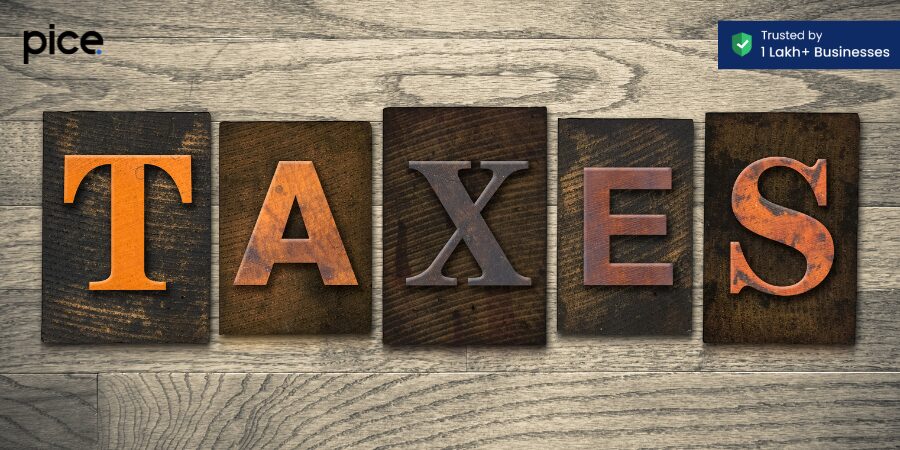Key Takeaway
- Integrating accounting and billing software with the GST portal streamlines tax compliance by automating tax calculations and submissions.
- Eligibility for downloading software from the GST portal depends on factors like business type, annual turnover, GST registration status, compliance history, and location.
- While free software offers cost savings, paid software provides comprehensive features, scalability, and dedicated support, crucial for SMEs’ growth.
- Selecting paid accounting software requires evaluating cost, adaptability, scalability, data security, and the quality of customer support.
- Accessing and choosing the right GST software through the GST portal involves considering business needs, software cost, and renewal policies.
The integration of accounting and billing software with the GST portal marks a step forward in making tax compliance easier for Indian businesses. This integration enables automatic transfer of financial data from a company’s accounting systems to the GST portal, covering tax calculations and invoice management. The goal is to minimize manual mistakes, conserve time, and comply with GST regulations effectively.
The integration works through APIs (Application Programming Interfaces) that connect the software directly with the GST portal. Businesses can upload tax returns, check ledger balances, and monitor filing statuses through the software, eliminating manual data entry on the GST portal. This not only streamlines the tax filing experience and process but also provides businesses with up-to-date information on their tax liabilities and credits.
Eligibility Criteria for Downloading GST Portal Billing Software
The GST portal provides accounting and billing software, mainly for SMEs, to help them meet GST rules. Not all businesses might have access to these software solutions from the portal. The eligibility criteria can include:
- Business Type and Sector: Some software options are made for certain business types or sectors and might not fit others.
- Annual Turnover: The GST portal often provides free or subsidized software options for businesses below a certain annual turnover threshold. This initiative is aimed at supporting small businesses in their compliance efforts.
- GST Registration Status: Only business owners that are registered under GST and have a valid GSTIN (Goods and Services Tax Identification Number) can access these software solutions. The GSTIN is required to authenticate and link the software with the GST portal.
- Compliance History: Businesses with a history of non-compliance or defaults may face restrictions or may not be eligible for certain software solutions until they resolve their compliance issues.
- Geographical Location: Some accounting software solutions might be tailored for businesses operating in specific states or regions, considering the local tax regulations and requirements.
To check your eligibility and download the appropriate software, businesses need to log in to the GST portal using their credentials. The portal provides detailed information on the available software options, including their accounting features, benefits, and any specific eligibility criteria. It’s important for businesses to carefully review these details and choose a software solution that best fits their operational needs and compliance requirements.
Using the appropriate accounting and billing software from the GST portal can make GST compliance easier, lower costs, and allow businesses to concentrate on main operations.
Evaluating Free vs. Paid Accounting and Billing Software for SMEs

Selecting suitable accounting and billing software is vital for SMEs to manage finances and adhere to GST rules effectively. The market offers a plethora of options, ranging from free to paid solutions, each with its own set of features and limitations. Understanding the difference between free and paid versions helps SMEs choose what suits their needs.
Free Software Pros and Cons
| Pros | Cons |
|---|---|
| Cost-Effective: The most apparent advantage is cost savings, which is particularly beneficial for startups and small businesses with limited budgets. | Limited Functionality: Free software often comes with restricted features, which might not cover all accounting needs or comply fully with GST requirements. |
| Basic Features: Many free versions offer essential features necessary for simple accounting and billing tasks, suitable for businesses operations. | Scalability Issues: As the business grows, the limitations of free software become apparent, necessitating a switch to more robust software. |
| Minimal Support: Free versions typically offer limited customer support, which can be a significant drawback during technical difficulties. |
Paid Software Advantages
| Pros | Cons |
|---|---|
| Comprehensive Features: Paid software usually provides a comprehensive set of accounting features, including advanced GST compliance, invoicing, and reporting tools. | Initial Cost: The upfront cost can be a barrier for some SMEs, although the long-term benefits often outweigh these initial expenses. |
| Scalability: These solutions are designed to grow with your business, offering more resources and capabilities as your needs evolve. | |
| Dedicated Support: Paid options often come with superior customer support, including access to training, tutorials, and a dedicated helpdesk. |
While free software can attract SMEs for cost reasons, paid versions provide greater functionality, security, and customer service. When selecting a paid solution, SMEs should carefully consider cost, adaptability, scalability, data security, and the quality of customer support to ensure that the software meets their current needs and is capable of supporting future growth.
Key Considerations When Choosing a Paid Accounting and Billing Software
Cost Analysis
- Return on Investment (ROI): Evaluate the software’s cost against the benefits it brings to your business, such as time savings, accuracy in financial management, and compliance ease.
- Subscription vs. One-Time Fee: Consider whether a subscription model or a one-time purchase makes more sense for your business’s cash flow and accounting needs.
Adaptability and Scalability
- Customization: The software should be customizable to fit your business processes, accounting practices, and reporting needs.
- Growth Support: Ensure the software can handle an increasing volume of transactions and adapt to new business requirements without significant additional costs.
Ensuring Data Security

- Data Protection: Robust security measures are essential to protect sensitive financial data. Look for software with encryption, secure data storage, and backup options.
- Compliance: The software should comply with local data protection regulations and financial reporting standards, ensuring that your business remains compliant with all legal requirements.
Assessing the Quality of Customer Support
- Availability: Support should be available when you need it, with minimal downtime, ensuring that any issues can be resolved quickly to maintain business continuity.
- Resources: Check if the provider offers comprehensive support resources, such as a knowledge base, user forums, and training materials, to help you maximize the software’s value.
In conclusion, while free accounting and billing software can be appealing for SMEs looking to minimize costs, paid software offers more in terms of features, security, and support. When selecting a paid solution, SMEs should carefully consider cost, adaptability, scalability, data security, and the quality of customer support to ensure that the software meets their current needs and is capable of supporting future growth.
How to Access Accounting and Billing Software through the GST Portal?
Accessing the right GST software for your business needs can be a straightforward process through the GST portal. Whether you’re a service provider, retail business, or operate across various business verticals, the portal offers a range of GST billing software solutions tailored to different requirements. To access these, simply log in with your credentials, navigate to the software section, and select the GST software that best fits your business operation needs. This software can help streamline GST returns, manage input tax credits efficiently, and ensure compliance with the composition scheme, among other functionalities.
💡If you want to pay your GST with your Credit card, then download Pice Business Payment app. The app allows you to pay all business expense such as GST, utility, rent, vendors and much more with your credit card.
Understanding the Cost Structure of Accounting and Billing Software on GST Portal
The cost of GST software varies depending on the features and capabilities it offers. Most GST billing software solutions are designed to cater to the diverse needs of businesses, from managing input tax credits to generating credit notes and complying with the composition scheme. When evaluating the cost, consider how the software can streamline business operations for your retail business or service provision, potentially offering savings that outweigh the initial investment. The GST portal provides relevant details on each software, including pricing, to help you make an informed decision.
Renewal Policies for Accounting and Billing Software Subscriptions
Understanding the renewal policies for your GST software subscription is crucial to ensure uninterrupted service. Most GST billing software options available through the GST portal require periodic renewal, depending on the subscription model chosen. These policies can vary, with some offering flexibility in terms of subscription duration and others providing options for long-term use. It’s important to review these policies carefully to understand how they align with your business’s needs, whether you’re managing a retail business, a service provider network, or multiple business verticals under the composition scheme.
FAQs
How often do I need to update my GST software?
GST software should be updated regularly to ensure compliance with the latest GST regulations and to incorporate any new features or improvements. Most GST billing software solutions will notify users of available updates.
Can GST software help with filing GST returns?
Yes, most GST software is designed to simplify the process of filing GST returns by automating calculations, generating reports, and allowing direct submission through the GST portal.
Is it possible to manage input tax credits with GST software?
Absolutely. GST software typically includes features that help businesses track and manage input tax credits efficiently, ensuring that you maximize your tax savings.
Can I issue credit notes through GST software?
Yes, issuing credit notes is a standard feature in many GST billing software solutions, making it easier to manage returns and refunds in compliance with GST regulations.
Does GST software support the composition scheme?
Many GST software options provide specific functionalities for businesses opting for the composition scheme, including simplified billing and tax calculation features tailored to the scheme’s requirements.
How does integrating an accounting and billing software with the GST portal simplify the annual return filing process?
Integrating accounting and billing software with the GST portal streamlines the annual return filing process by automating data entry and calculations. This integration ensures that all financial transactions are accurately reflected in your annual return, reducing the likelihood of errors and saving significant time during the tax filing period.
Can the return filing process be automated using accounting and billing software integrated with the GST portal?
Yes, the return filing process can be largely automated with integrated accounting and billing software. This software can compile and categorize GST data throughout the year, then directly upload it to the GST portal, making the process efficient and reducing manual intervention.
How does accounting and billing software handle sales returns in the context of GST?
Accounting and billing software that’s integrated with the GST portal can manage sales returns by automatically adjusting the output tax liability with the input credit, ensuring that the GST on returned goods is accurately accounted for. This helps maintain accurate financial records and simplifies the reconciliation process.
What are the benefits of using a business accounting tool integrated with the GST portal for managing service tax?
A business accounting tool integrated with the GST portal offers streamlined management of service tax by automatically calculating the tax on services, generating invoices with the correct tax rates, and filing returns directly through the portal. This integration ensures compliance with GST regulations while saving time and reducing errors in service tax management.
How can small businesses choose the right accounting and billing software for integration with the GST portal?
Small business entities should look for accounting and billing software that offers seamless integration with the GST portal, supports the specific needs of their industry, and provides features like automated return filing, sales return management, and service tax calculation. It’s also important to consider the software’s ease of use, customer support, and scalability to grow with the business.








